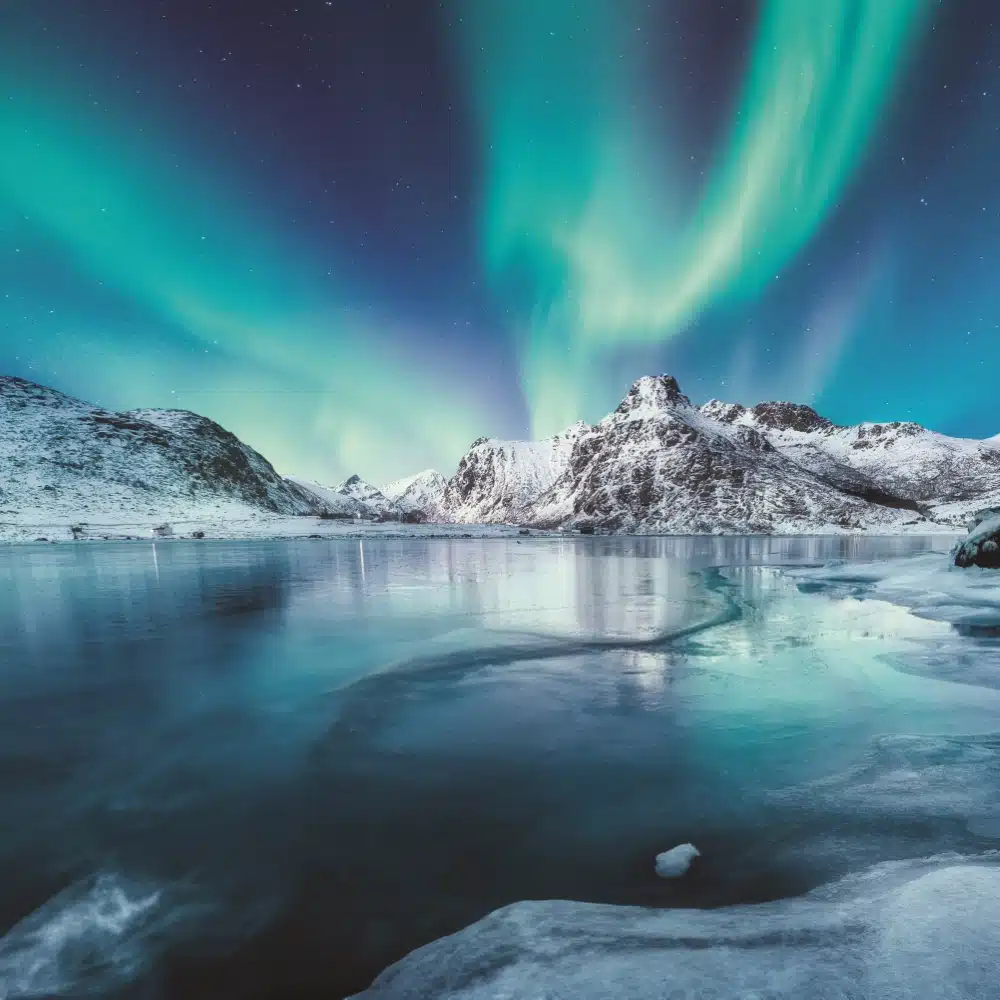A polar sky illuminated by a magical spectacle
In 2024, the northern lights put on a stunning display at unusually low latitudes, well beyond the polar regions. A chromatic rhapsody of green, red and violet hues is already writing 2024 into the annals of celestial observers.
Rare and intense solar activity
In 2024, intense solar activity has expanded the auroral oval, a zone usually centred around the Earth’s geomagnetic poles where polar lights are born. Researchers continue to study this period to fully understand its scale and implications. This is the first time in 20 years such activity has been detected, since the Halloween Solar Storms of 2003, classified as X17.2 and X10.
Solar flares, from A to X
Solar flares are classified into five main categories: A, B, C, M and X, according to their X-ray intensity, measured by geostationary orbit satellites. The most powerful, class X, can cause significant damage to satellites and communications systems. Each stage is ten times more intense than the previous one. For example, an X17.2 flare is 17.2 times more intense than an X1 flare
Although this geomagnetic storm is remarkable for its intensity, it does not rival the Carrington Event, a particularly powerful solar storm that occurred in 1859 and generally occurs once every 40 to 60 years
Part of the Solar Cycle 2025, this intense activity is expected to cause increasingly frequent occurrences until the peak anticipated for July 2025, a solar maximum that occurs roughly every eleven years.
This intense solar activity stretches the auroral oval, the zone usually centred around the Earth’s geomagnetic poles: this exceptional spectacle is no longer restricted to the polar regions.
The Atlantic illuminated
In May 2024, a solar flare of rare intensity, rated X2.8, painted the skies over France with a magenta veil, from the coasts of Longues-sur-Mer to Île-Rousse in Corsica, passing through Nantes, a rare sight in France. This storm lit up the Atlantic skies to 26 magnetic degrees with fairytale scenes unfolding over Teide and the Tajinaste fields of the Canaries.
Polar lights: a celestial alchemy
During solar storms, intense streams of particles are emitted and projected towards Earth by solar plasma. Attracted by the lines of the Earth’s magnetic field, our planet’s protective bubble, these particles converge on the polar regions. When they reach the ionosphere, they collide with atoms which then emit luminous photons, creating these celestial farandoles. The green hues come from collisions with oxygen, the pink and dark red with nitrogen, the blue and purple with hydrogen and helium.
Nocturnal magic in America
One month after the total eclipse of April 2024, the May storm led to the appearance of northern lights in the United States. In Alaiedon, in Michigan, green and pink glows lit up the skies, while in northern Texas, the vast plains were blanketed in a brilliant red.
The phenomenon spread like celestial fire beyond the equator. In Pucón, under the majestic shadow of the Villarrica volcano, the Chilean sky suddenly turned scarlet. Further south, in Ushuaia, observers were captivated by the blazing lights, an ode to the region’s name, the Land of Fire.
Patagonia, a prime celestial observatory
The Arctic: a rendezvous with the northern lights
The areas near the poles benefit from this peak activity and are still the best places to see these luminous phenomena. From the endless horizons of the rugged Canadian coastline of Nunavut, to the colourful villages of Greenland, via the icy expanses of Thule, to the fjords of Iceland and Scandinavia, the iconic landscapes of the Arctic enhance these spectacular lights.

Aurora borealis or aurora australis?
Photos credits: ©PONANT/Julien Fabro; ©iStock

Sky and sea with PONANT



